Blog:
An interview with Mike Fancher, author of “Re-Imagining Journalism: Local News for a Networked World”
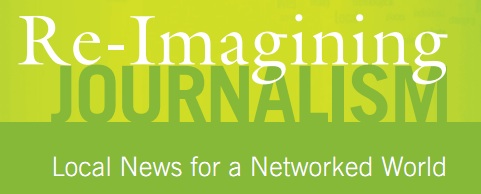
Across the field of journalism we’ve had an “information infusion” from a broad range of sources over the summer. Analysis, review and reporting from the likes of PEW, Knight, the Economist, Clay Shirky, the FCC’s recent 450+ page report furthering the analysis Knight Foundation started two years ago, and CJR’s recent write up “What We Know so Far.” The Chicago Community Trust has released a mother lode of data revealing new insights on the power of linking. The list outlined above is far from exhaustive but a good representation of the depth, breadth and focus on the unfolding of a “news industry interrupted” by some of the brightest minds today.
There is a general consensus that we’re bearing witness to a long-standing community of practice “reimagining” itself, a phrase Mike Fancher refers to in his new report, Local News for a Networked World. Posted in July, this paper was co-commissioned by the Aspen Institute and the Knight Foundation. As a veteran newsman and community advocate, Fancher brings a unique perspective to this work with a long run as executive editor of one of the finest city paper newsrooms in the nation, The Seattle Times. Noting his career as an editor unfolded in a far less turbulent time in the business lifecycle of news and reporting Fancher retired from the Times in 2008.
The combination of professional experiences Fancher has accrued over the course of his career has expanded further since his retirement. In 2008-2009 he served as a fellow at the Reynolds Journalism Institute at the University of Missouri focusing his study there on journalism ethics evolution in the digital age. Prior to returning to the academy as a fellow, while serving as a city paper editor, Fancher completed his master’s degree in business to better understand news, journalism and the marketplace it lives within, in context. Local News for a Networked World has been released as a white paper, but at 71 pages, Fancher describes the work as more of a policy paper. The list of resources offers143 citations—a fantastic side dish all on its own! With this much depth, thought and potential to further the observations and recommendation Fancher details in the paper, the JA thought an interview to distill down some of the key points by the author might be useful to our community.
This interview was conducted by phone with Mike Fancher on July 22, 2011
With the white paper completed, as you ponder the possibilities, how do you think we can further realize the potential of a networked world?
“If we were creating journalism today, I do not believe we would have created it in the same form as we did over the past century. 100 years ago, the practice of journalism came to life when information was scarce, distribution expensive, and the possibility for richly engaging in journalism wasn’t possible. I believe if it had been possible, to use the interactive communication technologies we have now, and the possibility of that had existed 100 years ago, [journalism] would have been designed as a collaborative process with citizens and journalists working in partnership.
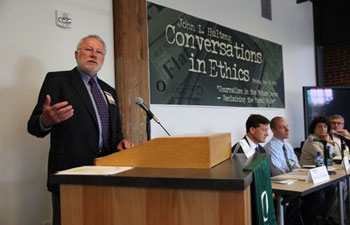
Mike Fancher leads the panel at the 2009 Hulteng Conversations in Ethics Conference. Photo from jcomm. uoregon.edu.
In this “new day” a new perspective is required; there is tremendous abundance beyond a single newsroom covering a community. Sandy Rowe’s piece, collaborative investigative newsroom, looks beyond the wall of your newsroom. Who’s out there doing things? How can we collaborate and co-create with a broader network? Traditional news producers should be working with each other, expanding upon existing infrastructure and creative capacity. Traditional and emerging media need to collaborate. Public and private media need to collaborate. For many traditional newspapers, it’s very revolutionary to recognize “the best news sources may very well exist outside of my newsroom.” This is a major shift in thinking. As newsrooms have cut back, we’re not going to get the resources we once had within a newsroom back – that means we need to look beyond this. And get others in the newsroom to do this as well. For example, how do we get investigative news staff, story research and ideas, to share this new kind of thinking, along with the new skills to collaborate across the newsroom? There’s also a paradigm shift around diversity, supporting a community with representation of the range of stories unfolding in people’s lives. This allows us do better journalism and more representative reporting. The more in touch news is with people, the more accurate and more trusted in the community it becomes. Diversity in the newsroom, not social engineering or instituting a political process but to do better journalism, means embracing the full range of topics, ethnicity, culture, lifestyle and economic conditions within communities. Reporting then becomes a more engaged, or more open informed form of journalism.”
What do you see as the key “take aways” from this substantive piece of work?
“A moment of opportunity for the field of news and reporting. It is the same technology that has disrupted journalism that is creating a new world of possibility where folks can work collaboratively to serve their communities. Not so much as an effort to save journalism, or a particular platform or industry, but to create more and better journalism than we’ve ever had before. Public engagement. There have been concerns that to more deeply engage the public, we’re giving up independence, lowering standards, pandering to lowest possible denominator. But I see this in reverse. The public will trust us more if we are more richly engaged with them. And we’ll better understand the story from their perspective Abundance versus scarcity mind set. In a world where those who have been a part of an existing newsroom have had so many resources stripped out from them, it’s important to look at what we’re gaining. And looking at this very literally. With an abundance mentality, there is the ability to embrace different points of view. If we can combine and share insights we come up with around new ways of approaching a problem, and now to include the public’s perspective, we end up with more ideas, better ideas and more diverse ideas. Beyond traditional excellence. Excellence in craft, standards and ethics are as important to journalism as ever before. In fact, they are what sets journalism apart in an age of information overload. But journalists must develop new ways of thinking about excellence. Journalism excellence in a networked world means having a reciprocal relationship with the people and communities you are serving. This more participatory form of journalism isn’t a threat to traditional excellence. It is the path to journalism that is relevant, accountable and sustainable.”

Left to Right: Karen Johnson (Seattle Magazine/Hacks & Hackers), Mike Fancher and David Boardman (Executive Editor, Seattle Times) gather with regional news experts at Seattle Magazine to discuss the Seattle news market. Photo by Jacob Caggiano.
What are your pearls of wisdom to support the field of community news sites striving to gain sustainability in a turbulent market?
“A lot more time is being spent around rethinking journalism rather than rethinking revenue and business/relevance and opportunity. Simple fact is research and development is sorely lacking in journalism. We’re just getting to a point where we are starting to understand what the market dynamics of online users are, what drives audience engagement, and how we might measure peoples time and attention. In dynamic markets, healthy competition is a good thing. If everyone is trying to do the same thing, it quickly becomes an issue for sustainability. Developing a unique mission, and value, that you can do that no one else can… Delivering on that – in terms of how to be successful – you have to be very good at what you do, and have to execute it very successfully across 1) content strategy, 2) technology used to deliver content and serve community, and 3) have a clearly structured business model to work from. Content was the focus at the beginning of the ‘atomization’ of news; understanding the technology was the next hurdle and the business part is harder still. If we can master the technology/business piece collaboratively we’ll be a lot more successful. There is a great deal of attention on the emerging media space, although traditional media is still struggling, it remains the most vibrant contributor in the mix.”
Natural competition in the marketplace; how can community sites leverage their social brands as mature new media news publishers?
“Getting the business side, starts with getting the journalist side nailed down. Answering things like: What value do I bring to the community? In the traditional newspaper business, we always knew 25 cents wasn’t the barrier to engagement: time to read it was the issue. Newspaper all too often is re-purposed as fish wrap. The importance of a strong value proposition is not totally new to journalism:
- What information need am I helping to serve?
- How will I satisfy this need in a unique way?
- What purpose do I have in people’s lives?
- How will I enrich my community’s daily experience?
In order to answer these questions, you have to live in your readers’ shoes. If I’m going to write a story, I can’t presume it’s understandable or important. Where does it meet their life? It’s not just an individual story, but how this story fits into the framework it lives in (e.g. publisher website or newspaper). What kind of news business is also important whether operating as a for-profit, nonprofit or public media news provider. Once you get clear on what you’re trying to do, it becomes a whole lot easier.”
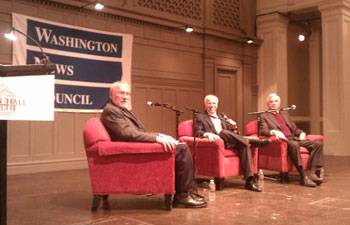
Left to Right: Mike Fancher, Tom Rosenstiel and Bill Kovach discuss citizen journalism at Seattle's Town Hall. Photo from futuresoup.com.
Where from here?
“Deeper shifts in an outdated mindset will lead us to embrace the public as co-creators. And this will lead to better journalism. I see this as raising the standards [of journalism]. Readers want to see news better than it is. Research out of Missouri reveals readers want to see journalism succeed, that the public is hungry for quality journalism and if we can engage them openly, we’ll deepen our connection with them. We’ll also reaffirm why the craft of journalism is as relevant today as it ever was. Why journalistic distillation of the facts is important, why context is important and facts presented fairly — is important. New media journalists and local community news sites are in a great position to serve as translators. Those who are bridging media, technology, journalism and education are in a unique position to collaborate, working between their communities and local newsrooms. This becomes a catalyst for change – these folks have the ability to bridge worlds. An industry that has remained the same for decades is going through an unprecedented rate of change. With that, there is a lot of resistance, loyalty around something legacy journalists, editors and publishers feel deeply about. To understand this loyalty begins to help folks shift a long standing news legacy tradition, to preserve the integrity behind it, but to make that transition and repurpose their loyalty — then you’re creating a movement from within the field across legacy and new media news publishers. New forms are emerging; how can different forms of publishing help others see the possibilities?”


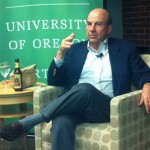
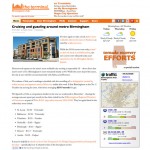
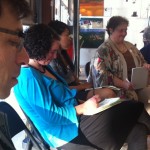


Weigh In: Remember to refresh often to see latest comments!
2 comments so far.
One more thought on local community engagement: I moved back to my hometown of Portland, Oregon after years reporting nationally and internationally for many reasons. One key piece for me was to experience being a part of a community I was covering. I found it presented many challenges simply because of the ways my responsibility as a journalist intersects with other aspects of my life. For example, I found friends and acquaintances who felt uncomfortable discussing personal or professional issues without noting that they were “off the record.” Or some who felt that I should report on their cause. Personal relationships can of course be key to helping new local journalism ventures succeed. I would love to hear how other local journalists handle their personal relationships in the communities they cover.
Mike – I love your passion and your vision. Public engagement seems to be one of the biggest challenges – I think you are talking here about journalists engaging with the public in the sense of really reflecting their experience. I also think about engagement as how people can influence and guide public and corporate policies, community traditions, etc.
I wonder if there is anything to be borrowed from public agencies and officials who have tried new ways to get a bead on the real experience and values of constituents. The facade public hearing with three minutes to speak moments before a binding vote is of course still with us, and often the public representation is not broad. Could / should journalism seek to improve that? Could the efforts of journalism to reaffirm its value provide any example to public agencies?